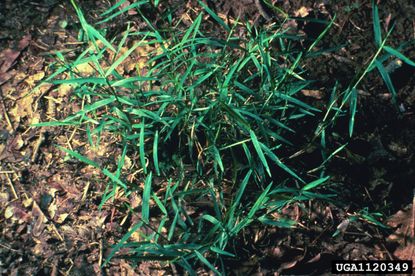Nimblewill Plant - Information On Nimblewill Treatment
Nimblewill grass pops up in turf lawn and looks a lot like turf grass, until it doesn't. Learn about some ways to control it.


Many people find themselves battling weeds within the lawn each year. One such weed is nimblewill grass. Unfortunately, there aren't any magic wands that will fully eradicate this plant. That being said, proper lawn maintenance can go a long way in its overall control.
What is Nimblewill Plant?
While this weed is often confused with Bermuda grass, there are distinct features of this plant that set it apart from this and other grass species. One is its mat-forming spreading habit. Nimblewill spreads by stolons that run along the surface of the soil, whereas many other grasses, like Bermuda, spread via rhizomes. It can also spread by seed if it's allowed to flower in late summer.
Nimblewill is much shorter and wiry looking with narrow blue-green leaves as well. It favors moist, shady areas but will also tolerate some sun. Since it doesn't tolerate cold conditions and goes dormant from fall throughout late spring, nimblewill is rather easy to spot in cool-season grasses during this time—appearing as brown, fuzzy patches throughout the lawn.
Nimblewill Control
Nimblewill is difficult to get rid of, so any nimblewill treatment will likely focus more on soil or lawn improvement than anything else.
Reseeding the area following treatment may also be necessary. It's probably a good idea to treat nimblewill areas before dealing with other issues that may be causing its growth. One of the best non-toxic method of killing this weed is with horticultural strength vinegar. Be sure to wear protective clothing and gloves when applying this,
Late summer, prior to its flowering and seeding, is a good time to start nimblewill control, as you can make any necessary adjustments to the soil prior to reseeding in fall. Once an application like vinegar has been applied, you'll want to focus on other issues like soil drainage, aeration, pH levels, and possible shade reduction since the weed grass thrives in shade and moisture. Have the soil tested and make necessary adjustments, such as loosening and amending the soil and adding lime, to improve its overall health. Remove any branches or overgrowth that may be shading the area as well. Fill in low spots or depressions that may be present.
After all these issues are addressed, the area can be sown or reseeded with new grass. With proper lawn maintenance and care, your headaches should become a thing of the past.
Gardening tips, videos, info and more delivered right to your inbox!
Sign up for the Gardening Know How newsletter today and receive a free download of our most popular eBook "How to Grow Delicious Tomatoes."

Nikki Tilley has been gardening for nearly three decades. The former Senior Editor and Archivist of Gardening Know How, Nikki has also authored six gardening books.
-
 Types Of Peonies Every Gardener Should Know
Types Of Peonies Every Gardener Should KnowKnowing the different types of peonies helps when you want your garden to include these fabulous plants. Showy and always impressive, peonies are an elegant addition.
By Bonnie L. Grant
-
 7 Sustainable Trends All Gardeners Should Take From The UK's Chelsea Flower Show
7 Sustainable Trends All Gardeners Should Take From The UK's Chelsea Flower ShowThe RHS Chelsea Flower Show 2024 is championing sustainability, with a focus on water conservation and creating resilient landscaping schemes in the face of climate change. Discover the key ideas to take away for your own garden.
By Melanie Griffiths